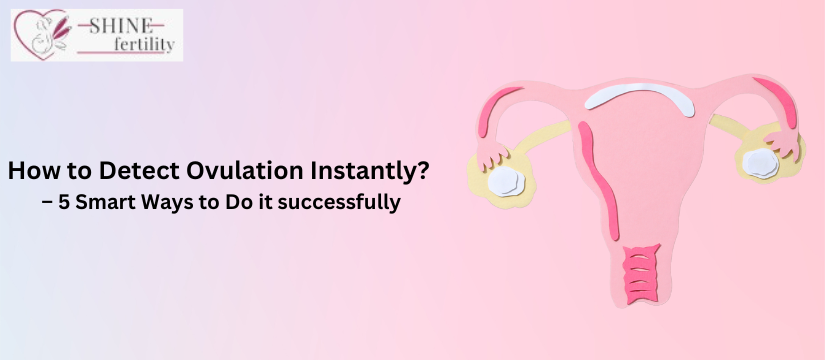“Ovulation can be detected with the help of 5 smart ways. This includes waiting for one-sided cramp and mid cycle bleeding, using ovulation predictor kit as well as BBT thermometer. The best advice is to visit an infertility specialist to receive guidance in tracking ovulation as well as finding out ovulation immediately.”
Ovulation is when your body releases an egg to be fertilized. If sperm happens to be waiting around to fertilize the egg, it results in a zygote that will grow into a human child 9 months later! Without sperm present when the egg drops, there will be no chance of a baby. As such, knowing the timing of your ovulation is very important if you are trying to get pregnant. Here are 5 ways to tell if you’re ovulating.
1. Wait for your Body to show you:
A one-sided cramp often signifies ovulation; mid-cycle bleeding often accompanies. As these symptoms may or may not show up from cycle to cycle and woman to woman, this isn’t a very reliable way of knowing when you ovulated.
Used by: Women who consistently display mid-cycle cramping and bleeding symptoms.
Accurate Rate: Decent, for the women who are sensitive to their bodies and know what to look for.
2. Pee on a Stick:
An Ovulation Predictor Kit (OPK) or ovulation calculator is a device on which you can pee daily to test the level or variety of hormones in your urine. Once the right hormones surge, the OPK test will give you a positive result. A positive result means that you will most likely ovulate in the next 36 hours!
The only downside to ovulation calculators is that they don’t work for everyone (they often don’t work for women who suffer from PCOS, for example). What’s more, ovulation calculators can get pretty expensive, pretty fast.
Used by: Anyone who is really motivated to learn when they ovulate.
Accuracy rate: Excellent (if you do not have PCOS or other hormonal conditions that interfere with test results).
3. Use a Thermometer:
Yes, we are serious. If you measure your temperature first thing every morning you might be able to detect the slight rise that comes immediately after you ovulate. This is called tracking your Basal Body Temperature (BBT) and is incredibly cool and rewarding to do.
The Shine fertility app lets you track your BBT, visualize it with beautiful charts, and learn all about it via dozens of free articles. If you plan to try BBT tracking, download the Shine fertility app!
Used by: Anyone who wakes up at the same time each morning and wants to marvel at how incredible the female body is.
Accuracy rate: Pretty good, as long as you’re consistent and don’t have underlying conditions that make your BBT unreliable.
4. Stick your finger in your vagina, daily:
Get this, the consistency and color of your cervical mucus changes throughout your cycle. When the stuff coming out of your vag starts looking like uncooked egg whites, that is when you know you are at your fertile days are here.
At the same time, your cervix (the little door to your uterus) changes positions and opens and closes depending on your cycle, too. If you want to track these changes or simply learn more about them, the Shine fertility app can give you some informative how-to’s
Used by: Everyone. Seriously–there is no reason to not do this if you’re trying to get pregnant!
Accuracy rate:Great, over time. This method has a learning curve, but it doesn’t take much time to become a superstar pro in deducing your own fertility through cervical mucus tracking.
5. See a doctor:
The most comprehensive and accurate way to determine ovulation is to consult a doctor. Doctors take ultrasound photos of your ovaries to determine how big your eggs have gotten. Then, at the right time (around your fertile days ), they can give you a shot that triggers ovulation 36 hours later.
Doctors use this method for fertility patients who want a bit of extra help in getting pregnant. Obviously, it’s not how most of us will determine ovulation or fertile days, month to month.
Disclaimer:
The content provided in this blog regarding surrogacy and fertility treatments is intended solely for informational purposes and should not be interpreted as legal or medical guidance. Laws and regulations related to fertility and surrogacy can differ significantly by region and may evolve. We advise consulting with experienced legal and medical professionals to receive tailored advice suited to your circumstances. ShineFertility disclaims any liability for actions taken based on the information presented in this blog.

